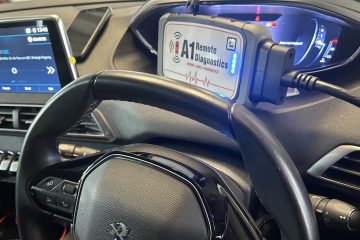A vast majority of drivers would continue on if the oil pressure light came on in their vehicle, according to a new survey by the AA.
Of the 12,598 drivers who responded, only 30% would stop immediately if the oil pressure light game on, while 33% would have driven on to a place of safety before switching off the engine. However, this action could lead to catastrophic engine damage, resulting in a large repair bill.
For drivers, a matter of seconds is the difference between an oil top-up and a damaged engine that can leave them stranded by the roadside, or worse if driving on one of the UK’s ‘smart’ motorways.
Oil pressure light confusion
Oil level warning lights (often confused with oil pressure lights), illuminate when an oil top-up is required – these are usually amber instead of red, and mean the vehicle can be driven until a top-up can take place, however, one in 10 respondents said they would stop immediately if this light came on.
Alongside the continued running with an oil pressure light, the AA survey showed that 24% of respondents said they would continue to drive with a coolant temperature warning light illuminated until they found somewhere safe to stop, while a further 25% said they would wait until the light came on, before checking what it meant. Like an engine oil pressure light, driving with a coolant temperature light on can lead to major engine damage and time off the road, in addition to a large bill.
Last year, the AA attended more than 17,000 vehicles where the driver had cited a dashboard warning light as the reason for their callout. On average, nine out of 10 of these vehicles were driven away, with one in ten of those only needing some reassurance on what the light referred to. For these drivers, a little research could have saved them the time and inconvenience of reporting a ‘breakdown’.
As more features are added to modern cars, the list of dashboard warning symbols will grow. Knowing the truth, when it comes to dash symbols and warning lights, can leave you better prepared if one of the lights or symbols suddenly illuminates when driving.
Charging system problems
The same survey revealed that only a 32% of respondents said that they would recognise a charging system warning light and would get to a place of safety before stopping if it came on.
This warning light refers to a battery charging or alternator fault, but as most alternators are belt driven, it does not necessarily mean that the alternator is broken and could indicate a broken fan belt or belt pulley system issue.
Tony Rich, former AA patrol of the year, said: ”With the sheer amount of information and warning symbols available on many modern dashboards, it’s ok to feel daunted. Learning what the main warnings lights and symbols mean before you actually need to know, can ease the strain if they come on when driving.
“Trying to access information on warning lights if you are in a rush, or when flustered, can lead to confusion around what the warning means. For example, knowing the difference between a light telling you that an oil change is due rather than the engine’s oil pressure being critically low can save you waiting at the roadside for help to arrive.



